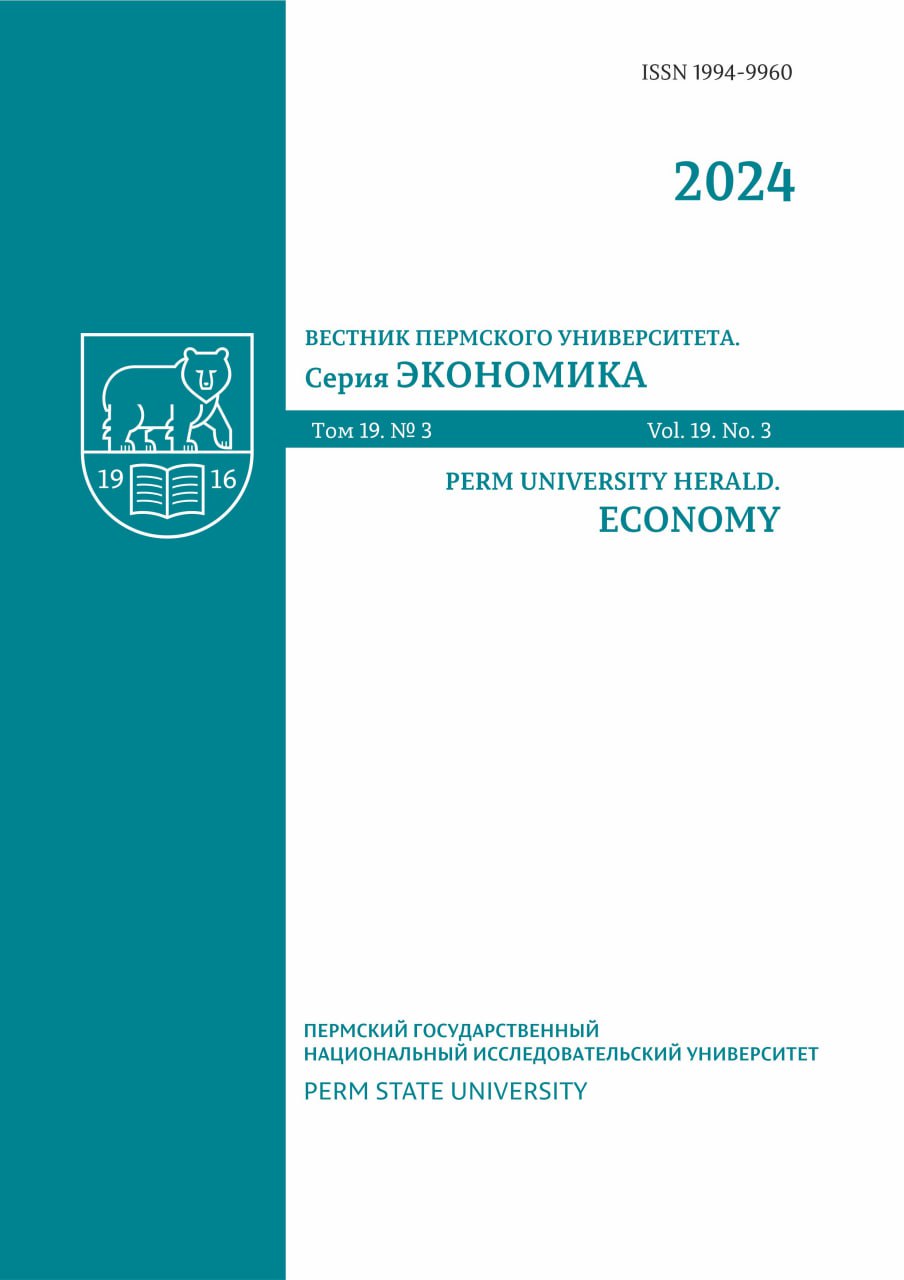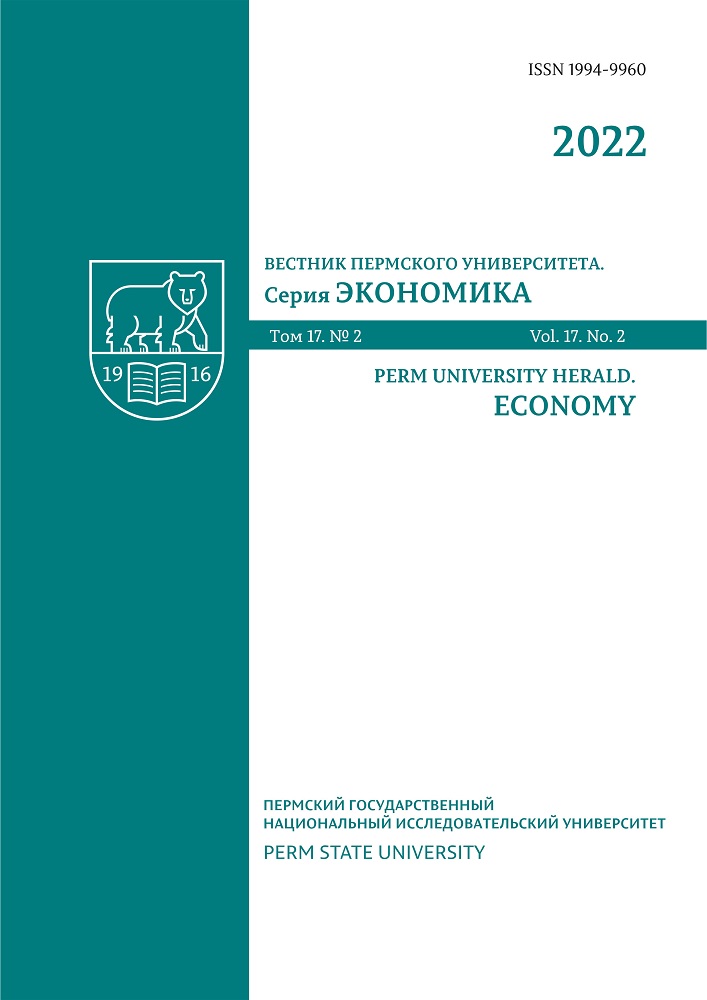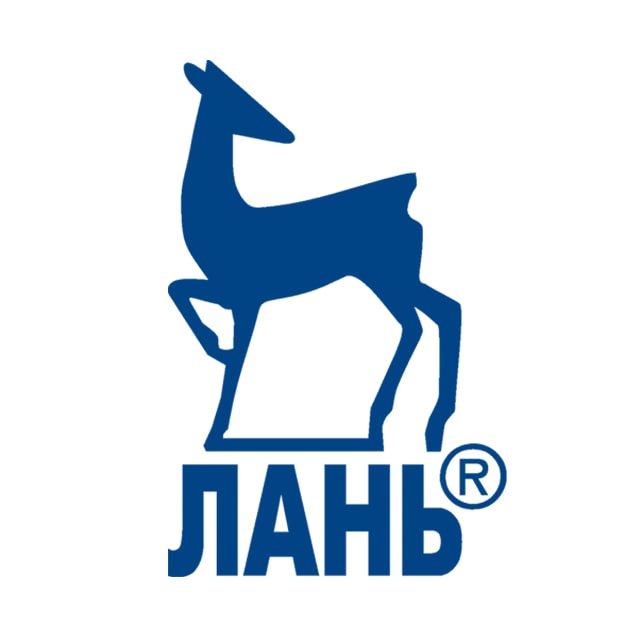Assessing region and industrial cluster mutual influence: System and spatial approach
DOI:
https://doi.org/10.17072/1994-9960-2022-2-161-184Abstract
An industrial cluster as an integrated tool for an area development is extensively applied all over the world. The purpose is to retranslate the practices of some successful cluster initiatives. Meanwhile, actual outcomes of industrial clustering are often negative or neutral. This can be explained with insufficient knowledge about the interaction of two territorial economic systems: a region and a cluster. Here, we take one of the first attempts to comprehensively evaluate this process and to develop some conceptual mechanism which can simulate the implications of a cluster policy both for the region and for an industrial cluster. To do this, the literature was reviewed. This reflected quite a complicated structure of theoretical and methodological background covering the interaction between a region and a cluster and methods of its study. The analyzed background describes six approaches to the interpretation of an industrial cluster (system, institutional, network, agglomeration, classical, and administrative ones) and four evaluative methodologies for a cluster impact on a region and a region impact on a cluster (statistical, regional, marketing, and case ones). In their practical studies, researchers combine methodologies with the approaches and develop a kind of conceptual systems (a theoretical approach + methodology). However, these systems are focused on either a territorial geographical aspect of an industrial cluster or its social economic field. As a result, the comprehensive assessment which is based on these conceptual systems doesn’t show the broad picture. To solve this problem, the authors offer a conceptual system which includes a system spatial approach and a statistical methodology with the cluster’s binary nature problem solved. In this case, the assessment of region and cluster interaction helped develop a visual model which predicts changes in the region’s impact on a cluster under the changes of cluster’s influence on a region and vice versa. The application of the model decreases the detrimental effects of a cluster policy and maximizes positive externalities both for a cluster and a region.
Keywords: industrial cluster, regional economy, mechanism of influence, system and spatial approach, economic milieu of a region, industrial cluster, region and cluster interaction, woodworking, woodworking cluster, mutual influence assessment
For citation
Koshcheev D.A., Miroliubova T.V. Assessing region and industrial cluster mutual influence: system and spatial approach. Perm University Herald. Economy, 2022, vol. 17, no. 2, pp. 161–184. DOI 10.17072/1994-9960-2022-2-161-184
References
- Enright M.J. Regional Clusters: What We Know and What We Should Know. Innovation Clusters and Interregional Competition: Advances in Spatial Science / J. Bröcker, D. Dohse, R. Soltwedel (eds.). Berlin, Heidelberg: Springer, 2003. DOI: 1007/978-3-540-24760-9_6
- Ebbekink M., Lagendijk A. What’s next in researching cluster policy: Place-based governance for effective cluster policy. European Planning Studies, 2013, vol. 21, iss. 5, pp. 735–753. DOI: 1080/09654313.2013.734460
- Koshcheev D.A., Tretiakova E.A. Rol' industrial'nogo klastera v ekonomike regiona: sistemno-aglomeratsionnyi podkhod i mekhanizm vzaimnogo vliyaniya [Industrial cluster’s role in region’s economy: System and agglomeration approach and interinfluence mechanism]. Vestnik Permskogo universiteta. Seriya: Ekonomika [Perm University Herald. ECONOMY], 2020, vol. 15, no. 4, pp. 512–550. (In Russian). DOI: 17072/1994-9960-2020-4-512-550
- Rasel S., Kalfadellis P. Global and non-global city locations: The effect of clusters on the performance of foreign firms. Regional Studies, Regional Science, 2021, vol. 8, no. 1, pp. 88–108. DOI: 1080/21681376.2021.1898461
- Ejdemo T., Örtqvist D. Exploring a leading and lagging regions dichotomy: does entrepreneurship and diversity explain it? Journal of Innovation and Entrepreneurship, 2021, vol. 10, article 6. DOI: 1186/s13731-021-00146-8
- Trachenko M.B., Gaisha O.D., Dzhioev V.A. Clustering as a factor of increasing investment attractiveness of the Islamic Republic of Iran. Vestnik Tomskogo gosudarstvennogo universiteta. Ekonomika [Tomsk State University Journal of Economics], 2020, no. 50, pp. 184–199. DOI: 17223/19988648/50/13
- Kolmogorov O.I. Perspektivy razvitiya sotsial'noi funktsii v promyshlennykh klasterakh [Possibility for the development of social functions in industrial clusters]. Ekonomika i biznes: teoriya i praktika [Economy and Business: Theory and Practice], 2021, no. 2-1 (72), pp. 104–107. (In Russian). DOI: 24412/2411-0450-2021-2-1-104-107
- Tatarkin A.I., Petrov A.P. Vliyanie mediko-farmatsevticheskikh klasterov na ekonomiku regionov [Effect of medical pharmaceutical clusters on the regional economy]. Ekonomika i matematicheskie metody [Economy and Mathematical Methods], 2014, no. 50 (2), pp. 16–23. (In Russian).
- Belso-Martínez J.A., Mas-Verdu F., Chinchilla-Mira L. How do interorganizational networks and firm group structures matter for innovation in clusters: Different networks, different results. Journal of Small Business Management, 2020, vol. 58, no. 1, pp. 73–105. DOI: 1080/00472778.2019.1659673
- Hermans F. The contribution of statistical network models to the study of clusters and their evolution. Papers in Regional Science, 2021, vol. 100, no. 2, pp. 379–403. DOI: 1111/pirs.12579
- Babkina T.V., Babkin P.Yu., Pereverzeva M.N. Gosudarstvenno-chastnoe partnerstvo kak osnova povysheniya konkurentosposobnosti territorii (na primere proekta «Promyshlennyi kompleks g. Novomoskovsk Tul'skoi oblasti») [Public-private partnership as the basis for higher competitiveness of the territory (a case study of Industrial Area Project in Novomoskovsk City in Tula Region). Naukovedenie [Science Studies], 2015, no. 7 (31), pp. 1–15. (In Russian).
- Dobrova K.B. Klaster kak instrument povysheniya konkurentosposobnosti i innovatsionnoi aktivnosti predpriyatii oboronno-promyshlennogo kompleksa [Cluster as a tool to increase the competitiveness and innovative activity of enterprises of the defense industry complex]. MIR (Modernizatsiya. Innovatsii. Razvitie) [MIR (Modernization. Innovation. Research)], 2017, no. 8 (3), pp. 396–403. (In Russian). DOI: 18184/2079-4665.2017.8.3.396-403
- Lupova-Henry E., Blili S., Dal Zotto C. Clusters as institutional entrepreneurs: Lessons from Russia. Journal of Innovation and Entrepreneurship, 2021, vol. 10, article 7. DOI: 1186/s13731-021-00149-5
- Anokhin S., Wincent J., Parida V., Chistyakova N., Oghazi P. Industrial clusters, flagship enterprises and regional innovation. Entrepreneurship & Regional Development, 2019, vol. 31, iss. 1-2, pp. 104–118. DOI: 1080/08985626.2018.1537150
- Khabibullin R.I. Innovatsionno-promyshlennyi klaster kak institut razvitiya mezoekonomiki [Innovation-industrial cluster as an institute for development of the mesoeconomy]. Economics, 2020, no. 4 (47), pp. 17–19. (In Russian). DOI: 24411/2410-289X-2020-10402
- Kolesnikov A.M., Titov A.K. Mekhanizm realizatsii klasternoi politiki vysokotekhnologichnykh promyshlennykh klasterov [The mechanism for implementing the cluster policy of high-tech industrial clusters]. Rossiiskii ekonomicheskii internet-zhurnal [Russian Economic Online Journal], 2019, no. 4. 17 p. (In Russian). Available at: http://www.e-rej.ru/upload/iblock/0d6/0d6502a37a204dbd54215ca25b97ecf5.pdf (access date 25.02.2022).
- Noori S., Korevaar G., Ramirez A.R. Assessing industrial symbiosis potential in emerging industrial clusters: The case of Persian Gulf mining and metal industries special economic zone. Journal of Cleaner Production, 2021, no. 280, pp. 1–17. DOI: 1016/j.jclepro.2020.124765
- Lis A. Development of proximity in cluster organizations. Entrepreneurship and Sustainability Issues, 2020, vol. 8, no. 2, pp. 116–132. DOI: 9770/jesi.2020.8.2(7)
- Harris J.L. Emerging clusters: The importance of legitimacy, path advocates, and narratives. European Planning Studies, 2021, vol. 29, iss. 5, pp. 942–961. DOI: 1080/09654313.2020.1817864
- Kovaleva T.Yu. Teoretiko-metodologicheskie osnovaniya i rezul'taty otsenki effektivnosti klasternogo prostranstvennogo razvitiya regionov RF [Theoretical-methodological bases and results of estimation of the effectiveness of cluster spatial development of the Russian Federation regions]. Vestnik Astrakhanskogo gosudarstvennogo tekhnicheskogo universiteta. Seriya: Ekonomika [Vestnik of Astrakhan State Technical University. Series: Economics], 2018, no. 2 (2), pp. 101–111. (In Russian). DOI: 24143/2073-5537-2018-2-101-111
- Gakashev M.M. Modeli organizatsii regional'nykh promyshlennykh klasterov: obzor mezhdunarodnogo opyta [Models of the organization of regional industrial clusters: review of the international experience]. Vektor nauki Tol'yattinskogo gosudarstvennogo universiteta [Science Vektor of Togliatti State University], 2013, no. 4, pp. 86–89. (In Russian).
- Pizengolts V., Savelyeva I., Korobeinikova E.M. Assessment of financial performance of agro-industrial cluster. Academy of Strategic Management Journal, 2018, vol. 17, iss. 3, pp. 1–9. (In Russian).
- Juščius V., Viederytė R., Laurišonienė E., Sniegowski M. Formation of Lithuanian manufacturing industry clustering economic preconditions. Problems and Perspectives in Management, 2020, vol. 18, iss. 2, pp. 140–153. DOI: 21511/ppm.18(2).2020.13
- Zhambrovskii V.M., Savel'ev I.I., Lachin A.A., Lachina E.A., Puzanova O.A. Perspektivy razvitiya promyshlennykh klasterov v Rossii [Prospects of development of industrial clusters in Russia]. Izvestiya vysshikh uchebnykh zavedenii. Tekhnologiya tekstil'noi promyshlennosti [Proceedings of Higher Educational Institutions. Textile Industry Technology], 2020, no. 6, pp. 31–35. (In Russian).
- Chernikov E.A. Formirovanie klasterov v tselyakh povysheniya konkurentosposobnosti regionov Rossiiskoi Federatsii v sovremennykh sotsial'no-ekonomicheskikh usloviyakh [Clusters for better competitiveness of the regions of the Russian federation in modern social economic conditions]. Regional'naya ekonomika: teoriya i praktika [Regional Economy: Theory and Practice], 2009, no. 40, pp. 28–32. (In Russian).
- Singh D. Cluster space among labor productivity, urbanization, and agglomeration of industries in Journal of the Knowledge Economy, 2022, no. 13, pp. 1008–1027. DOI: 1007/s13132-021-00726-9
- Foghani S., Mahadi B., Omar R. Promoting clusters and networks for small and medium enterprises to economic development in the globalization era. SAGE Open, January 2017. DOI: 1177/2158244017697152
- Ganau R., Rodríguez‐Pose A. Industrial clusters, organized crime, and productivity growth in Italian SMEs. Journal of Regional Science, 2018, vol. 58, iss. 2, pp. 363–385. DOI: 1111/jors.12354
- Mikhailov A.S., Mikhailova A.A., Khvalei D.V. Otraslevye klastery prigranich'ya evropeiskoi chasti Rossii: dinamika obrazovaniya v 2000-kh gg. [Industry clusters at the European borderland of Russia: the dynamics of formation in the 2000s]. Pskovskii regionologicheskii zhurnal [Pskov Journal of Regional Studies], 2021, iss. 1 (45), pp. 3–20. (In Russian). DOI: 37490/S221979310013594-6
- Karaeva F.E. Metodicheskie aspekty vyyavleniya vidov regional'noi ekonomicheskoi deyatel'nosti v tselyakh formirovaniya regional'nykh promyshlennykh klasterov [Methodological aspects of revealing the types of regional economic performances to develop regional industrial clusters]. Vestnik Rossiiskoi akademii estestvennykh nauk. Sankt-Peterburgskoe otdelenie obrazovaniya i razvitiya nauki [Bulletin of the Russian Academy of Natural Sciences. Saint Petersburg Office of Education and Science Development], 2012, no. 16 (3), 136–141. (In Russian).
- Nicolini R. Size and performance of local clusters of firms. Small Business Economics, 2001, vol. 17, no. 3, pp. 185–195. DOI: 1023/A:1011834106853
- Nilsson I., Smirnov O., Reid N., Lehnert M. To cluster or not to cluster? Spatial determinants of closures in the American craft brewing industry M. Lehnert. Papers in Regional Science, 2019, vol. 4 (98), pp. 1759–1778. DOI: 1111/pirs.12434
- Azhar A., Adil S. The Effects of Agglomeration on Socio-economic Outcomes: A District Level Panel Study of Punjab. The Pakistan Development Review, 2016, pp. 155–170. Available at: https://www.jstor.org/stable/44986481 (access date 25.02.2022).
- Sakharova L.A. Klasterizatsiya rossiiskoi promyshlennosti: otsenki i perspektivy [Clustering of the Russian industry: Assessments and prospects]. Ekonomicheskii analiz: teoriya i praktika [Economic Analysis: Theory and Practice], 2015, no. 37 (436), pp. 13–24.
- Michaud G., Jolley G.J. Economic contribution of Ohio's wood industry cluster: Identifying opportunities in the Appalachian Region. Review of Regional Studies, 2019, vol. 49, iss. 1, pp. 149–171. DOI: 52324/001c.7936
- Tomás‐Miquel J.V., Expósito‐Langa M., Molina‐Morales F.X. Loving outside the neighborhood: The conflicting effects of external linkages on incremental innovation in clusters. Journal of Small Business Management, 2019, vol. 57, iss. 4, pp. 1738–1756. DOI: 1111/jsbm.12439
- Nishimura J., Okamuro H. Subsidy and networking: The effects of direct and indirect support programs of the cluster policy. Research Policy, 2011, vol. 40, iss. 5, pp. 714–727. DOI: 1016/j.respol.2011.01.011
- Akhunzhanova I.N., Tomashevskaya Yu.N., Osipov D.V. Instrumenty otsenki konkurentosposobnosti innovatsionnykh klasterov (na primere klastera «Silikonovaya Saksoniya») [Tools for evaluating the competitiveness of innovative clusters (Silicon Saxony case)]. Baltiiskii region [Baltic Region], 2020, no. 12 (2), pp.153–173. (In Russian). DOI: 5922/2079-8555-2020-2-10
- Akhtarieva L.G. Klasternyi mekhanizm povysheniya konkurentosposobnosti regiona [Cluster mechanism of better competitiveness of a region]. Regional'naya ekonomika: teoriya i praktika [Regional Economics: Theory and Practice], 2009, no. 34, pp. 54–61. (In Russian).
- Irawati D. Strengthening cluster building in developing country alongside the Triple Helix: Challenge for Indonesian clusters – A case study of the Java Region. Munich Personal RePEc Archive. 26 p. Available at: https://mpra.ub.uni-muenchen.de/5831/1/MPRA_paper_5831.pdf (access date 23.03.2022).
- Koshcheev D.A., Isopeskul' O.Yu. Proektirovanie turistskikh klasterov: sistemno-aglomeratsionnyi podkhod [Tourist clusters design: System agglomeration approach]. Moscow, INFRA-M Publ., 2020. 324 p. (In Russian).
- Mirolyubova T.V., Karlina T.V., Kovaleva T.Yu. Zakonomernosti i faktory formirovaniya i razvitiya regional'nykh klasterov: monografiya [Regularities and factors of establishment and development of regional clusters: monograph]. Perm, Perm. gos. nats. issled. un-t Publ., 2013. 280 p. (In Russian).
- Feser E.J., Bergman M.E. National industry cluster templates: A framework for applied regional cluster analysis. Regional studies, 2000, vol. 34, iss. 1, pp. 1–19. DOI: 1080/00343400050005844
- Dyba W., Stryjakiewicz, Marchi V. de. Knowledge sourcing and cluster life cycle – a comparative study of furniture clusters in Italy and Poland. European Planning Studies, 2020, vol. 28, iss. 10, pp. 1979–1998. DOI: 1080/09654313.2019.1701996
- Shin D.H., Hassink R. Cluster life cycles: The case of the shipbuilding industry cluster in South Korea. Regional Studies, 2011, vol. 45, iss. 10, pp. 1387–1402. DOI: 1080/00343404.2011.579594
- Zubarevich N.V. Vliyanie pandemii na sotsial'no-ekonomicheskoe razvitie i byudzhety regionov [Influence the pandemic at socio-economic development and regional budget]. Voprosy teoreticheskoi ekonomiki [Theoretical Economics], 2021, no. 1 (10), pp. 48–60. (In Russian). DOI: 24411/2587-7666-2021-10104
- Zadorova T.V. Otsenka effektivnosti deyatel'nosti promyshlennykh klasterov kak neobkhodimoe uslovie realizatsii regional'noi klasternoi politiki (na primere Chuvashskoi Respubliki) [Estimation of the effectiveness of the activity of industrial clusters as the necessary condition of the realization of regional cluster policy (based on the example of Chuvash Republic)]. Vestnik Chuvashskogo universiteta [Bulletin of the Chuvash University], 2009, no. 3, pp. 409–412. (In Russian).
- Morzhakova K.E. Otsenka effektivnosti realizatsii innovatsionnykh territorial'nykh klasterov [The evaluation of the effectiveness of the implementation of innovative territorial clusters]. Strategii biznesa [Business Strategies], 2017, no. 5 (37), pp. 17–22. (In Russian). DOI: 17747/2311-7184-2017-5-17-22
- Kireenko A.P., Zav'yalova E.O. Vliyanie masshtabov i struktury vneshnei torgovli na sotsial'no-ekonomicheskoe razvitie (sravnitel'nyi analiz na primere sub"ektov Sibirskogo federal'nogo okruga) [The impact of scales and structure of foreign trade on socio-economic development (A comparative analysis on the example of the subjects of the Siberian Federal District)]. Izvestiya Baikal'skogo gosudarstvennogo universiteta [Bulletin of Baikal State University], 2014, no. 3, pp. 27–36. (In Russian).
- Shirokova E.Yu. Podderzhka regional'noi eksportnoi deyatel'nosti (keisy regionov-liderov po rostu eksportnoi kvoty) [Support for regional export activities (cases of regions leaders in growth of export quota)]. Nauchnyi vestnik Yuzhnogo instituta menedzhmenta [Scientific Bulletin of the Southern Institute of Management], 2019, no. 1 (25), pp. 39–52. (In Russian). DOI: 31775/2305-3100-2019-1-39-52
- Fayyaz A., Lund-Thomsen P., Lindgreen A. Industrial clusters and CSR in developing countries: The role of international donor funding. Journal of Business Ethics, 2017, vol. 146, pp. 619–637. DOI: 1007/s10551-015-2940-6
- Khanin G.I. Vnutriotraslevye strukturnye izmeneniya i ikh vliyanie na otsenku razvitiya promyshlennosti v RF (1987–2011 gg.) [Intra-branch structural changes and their influence on the assessment of the development of industry in the Russian Federation (1987–2011)]. Razvitie territorii [Development of Territories], 2015, no. 2, pp. 28–36. (In Russian).
- Evsyukova N.Yu. Problemy importozameshcheniya v pishchevoi promyshlennosti Rossiiskoi Federatsii [Import substitution concerns in food industry in the Russian Federation]. Nepreryvnoe blagopoluchie v mire: sb. nauch. tr. Mezhdunar. nauch. simp. (Tomsk, 11–16 sent. 2016 g.) [Continuing global wellbeing: collection of works from International Scientific Symposium (Tomsk, 11–16 Sep 2016)]. Tomsk, Izd-vo TPU Publ., 2016, pp. 41–44. (In Russian).
- Vakhrameev I.I. Vliyanie transportnoi infrastruktury na otraslevoe razvitie ekonomiki regiona [Influence of transport infrastructure on the branch development of the region’s economy]. Vestnik Zabaikal'skogo gosudarstvennogo universiteta [Bulletin of Transbaikal State University], 2014, no. 8 (111), pp. 85–91. (In Russian).
- Abramov A.A., Vorob'eva M.V. Povyshenie effektivnosti ispol'zovaniya byudzhetnykh sredstv na osnove vnedreniya innovatsionnykh tekhnologii stroitel'stva i remonta avtodorog [Enhancing the efficiency of budget funds utilization by means of introducing innovative technologies in road construction and repair]. Vestnik Nizhegorodskogo universiteta im. N.I. Lobachevskogo [Vestnik of Lobachevsky university of Nizhni Novgorod], 2008, no. 2, pp. 185–189. (In Russian).
- Raznodezhina E.N. Rost zanyatosti naseleniya kak uslovie rosta dokhodov [Population employment growth as an income growth factor]. Trudy Ul'yanovskogo nauchnogo tsentra «Noosfernye znaniya i tekhnologii»: sb. nauch. tr. [Works of Ulyanovsk Scientific Center “Noosphere Knowledge and Technologies”: collection of scientific works]. Ulyanovsk, Ul'yan. gos. tekh. un-t Publ., 2018, pp. 90–94. (In Russian).
- Silichev M.A. Formirovanie stoimosti benzina v Rossii [Formation of the price of petrol in Russia]. Moskovskii ekonomicheskii zhurnal [Moscow Economic Journal], 2020, no. 8, pp. 391–397. (In Russian). DOI: 24411/2413-046Х-2020-10544
- Rodríguez-Pose A., Comptour F. Do clusters generate greater innovation and growth? An analysis of European regions. The Professional Geographer, 2012, vol. 64, iss. 2, pp. 211–231. DOI: 1080/00330124.2011.583591
- Delgado M., Porter M.E., Stern S. Clusters, convergence, and economic performance. Research Policy, 2014, vol. 43, iss. 10, pp. 1785–1799. DOI: 1016/j.respol.2014.05.007
- Akulov A.O. Rol' malogo biznesa v modernizatsii ekonomiki regiona [The role of small-size business in modernizing the region’s economy]. Regional'naya ekonomika: teoriya i praktika [Regional Economics: Theory and Practice], 2013, no. 44, pp. 34–43. (In Russian).











